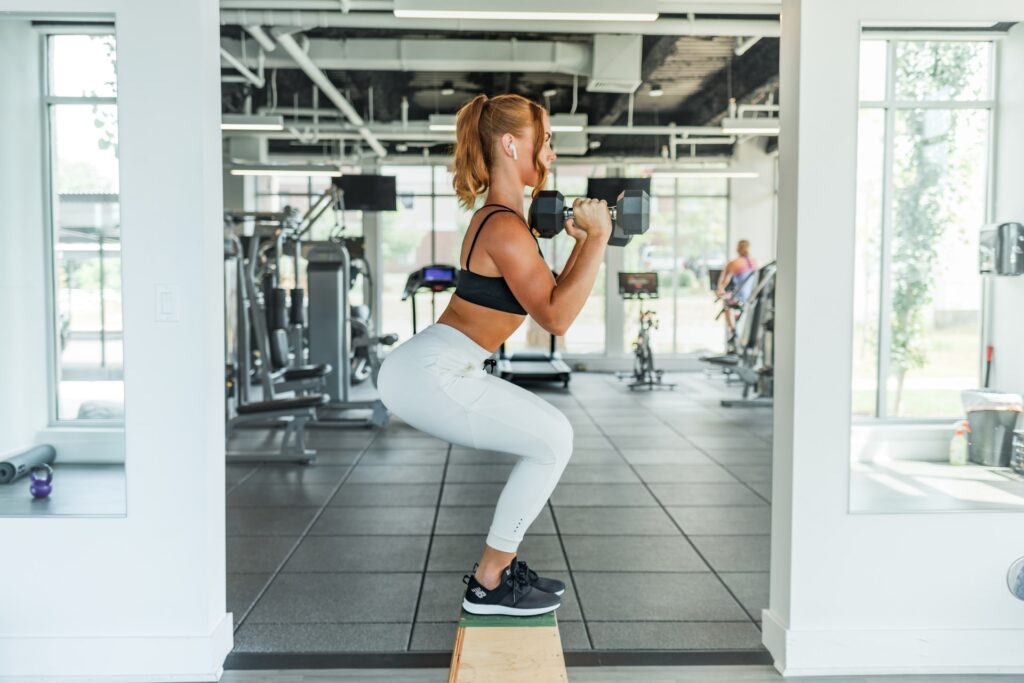There is a general opinion going around that the muscles are built in the gym, but there is also another one that muscles are built in the kitchen. So, which one is it then?
The first two steps are for sure; (1) sufficient intake of healthy calories, but not only from the protein source. Proteins by itself will not give you the muscle mass, you may even lose the body weight, but all on the expense of muscles.
The most common mistake fitness people are making is giving attention only to proteins. A high amount of proteins, before or after a workout will only store in fat, if we talk about let’s say additional 50g of proteins per meal. High amounts of proteins are not healthy for our body.

And (2) is regular and properly designed physical activity.
It does not mean that you need to be stuck in the gym for two hours per day, rather have properly designed full-body workout three times per week. It is enough!
Another thing to point out is the split gym system: splitting exercises by muscle groups does not give us the best results we are chasing for. That is because, in that kind of gym plan, the certain groups do not come enough frequently on our weekly workout plan. Therefore our hormonal response will not give us sufficient support in case you split them. The hormonal response plays a big role in gaining muscle mass, so when you start with your workout routine, or you get back to it after a while, it also depends on how many big muscle groups you are capable of activating in your workout routine. So-called complex exercises.
We need to have well planned whole-body workouts, which we need to be doing regularly for a longer period of time because the body needs to adapt to the regime. 45 min is more than enough for one session, as long as you are keeping your heart rate up during this whole time.
One thing we should point out is that for being successful in the long term, you need to like this kind of workouts, as if you don’t, you can only be a seasonal fitness person and you won’t be able to maintain this regime for a longer period (years).
Three months period is the minimum to see the first results. Earlier we can notice the improved body tone, improved expression of certain muscles and better feeling overall, but the actual muscle gain will start to appear only after approximately 3 months.
We see a lot of people that are exercising daily for a long period of time, doing all kinds of workouts from cardio to weight exercises and they still don’t have the muscle tone they would like to achieve. They have excess body fat (not to talk about energy levels and their health).

So my question for you is, what do you think would happen to them if they stop training?
Long term training as part of a healthy active lifestyle is something we should strive for, not only being closed inside the gyms throwing the weights around. The time for building up the muscle mass is also dependent on your previous experiences, hormonal response and the room to improve your body composition.
Gaining muscles can be quite tricky regarding the functionality of the body, as there is a functional body and unfunctional body. By that I mean – as in relation to having just enough muscle mass for proper flexibility, well performance, speed, agility and effectiveness of the body. You also need to be careful not to gain excess body fat alongside with gaining muscle mass.
It defers as well from women to men, because many women do not want to look muscular. They want to look defined, so we should also keep that in mind. In any case, I would highly recommend you to use the body analyser, as with it you can actually track your composition and see exactly what is happening with your body and in which direction your result is going to. Good body composition analysers can be up to 96% correct and even if you are using the same one, over time the results will be accurate to your change.
To sum it up – the weight is not important for our health! What’s important is the body fat percentage, muscle mass, calories your body burns, water percentage and mostly – low visceral fat.
Source: Boštjan Jakše, Physical Educational teacher and conditioning coach. PhD in Nutrition. Author of the book “Chronically ill is business” (Slovenian version) and many other studies in Nutrition.

